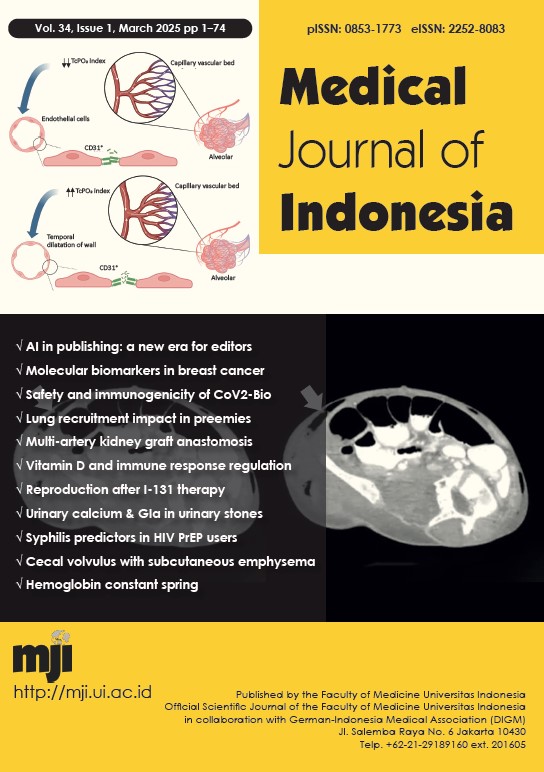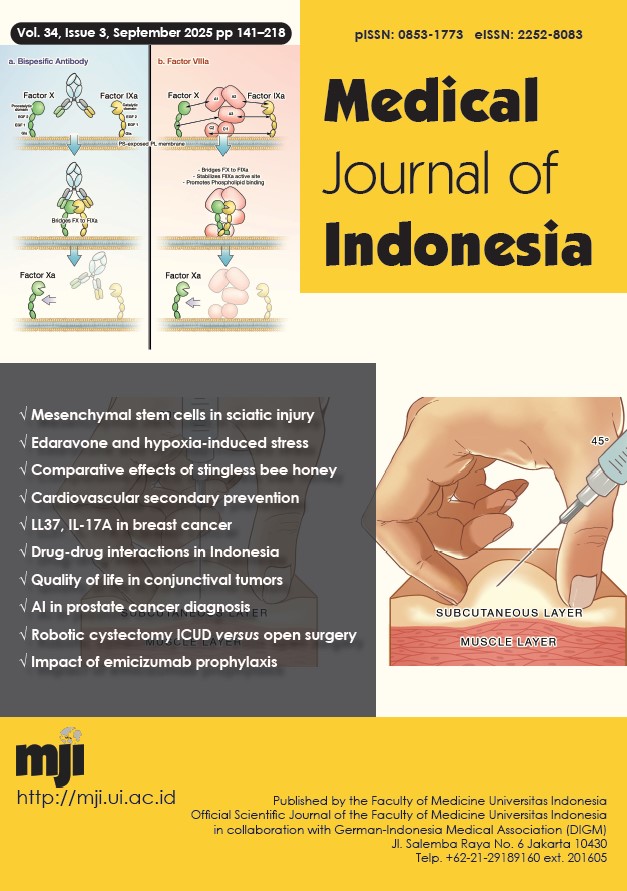Predictors of syphilis infection among HIV pre-exposure prophylaxis users
DOI:
https://doi.org/10.13181/mji.oa.257601Keywords:
sexually transmitted infections, syphilis, hepatitis B, hepatitis C, pre-exposure prophylaxisAbstract
BACKGROUND Pre-exposure prophylaxis (PrEP) has revolutionized HIV prevention worldwide. However, research has shown a contradictory trend in which PrEP helps reduce HIV incidence, but increases sexually transmitted infections (STIs), especially in high-risk groups like men who have sex with men and female sex workers. This study aimed to examine the association between sex, age, occupational status, hepatitis B virus (HBV) infection, and hepatitis C virus (HCV) infection with syphilis infection among PrEP users.
METHODS The cross-sectional survey was conducted over 1 year, with 864 participants in Thu Duc City Hospital, Vietnam. The chi-square test was utilized for descriptive analysis. Binary logistic regression models estimated the association between sex, age, occupational status, HBV infection, and HCV infection with syphilis infection. Odds ratio (OR) and 95% confidence intervals (CIs) were calculated.
RESULTS Of 864 participants, 147 (18.2%) men and 68 (23.7%) employed individuals were tested positive for syphilis. The findings indicated that men (OR = 13.805; 95% CI = 1.886−101.024), employed individuals (OR = 1.838; 95% CI = 1.191−2.834), and HBV infection (OR = 2.076; 95% CI = 1.108−3.891) were significantly associated with an increased risk of syphilis infection.
CONCLUSIONS Men, employed individuals, and individuals infected with HBV face a higher risk of syphilis infection among PrEP users.
Downloads
Published
How to Cite
Issue
Section
License
Copyright (c) 2025 Thanh Tran Ai Nguyen, Thanh Vu-Tri, Vu Hoang Anh Nguyen, My-Tien Nguyen-Thi, Huyen-Trang Luu-Thi, Thanh-Thao Ly, Yen Thi Hoai Phan

This work is licensed under a Creative Commons Attribution-NonCommercial 4.0 International License.
Authors who publish with Medical Journal of Indonesia agree to the following terms:
- Authors retain copyright and grant Medical Journal of Indonesia right of first publication with the work simultaneously licensed under a Creative Commons Attribution-NonCommercial License that allows others to remix, adapt, build upon the work non-commercially with an acknowledgment of the work’s authorship and initial publication in Medical Journal of Indonesia.
- Authors are permitted to copy and redistribute the journal's published version of the work non-commercially (e.g., post it to an institutional repository or publish it in a book), with an acknowledgment of its initial publication in Medical Journal of Indonesia.






































